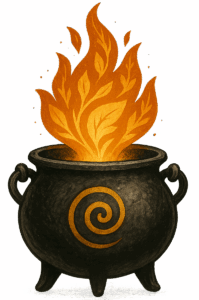Beltane is the festival of yes: fire, blossoms, and protections woven with laughter. The lore speaks of cattle driven between twin bonfires for blessing, may boughs hung above doors, and bright processions that knit communities together. Hawthorn (Huath) is a classic threshold tree, it’s beautiful and prickly, but must be approached with respect. Ribbons and maypoles are not just pretty; they show what happens when many strands move with consent toward a shared pattern.
History remembers Beltane as a time of warding and celebration in equal measure. Households marked boundaries, fields, and animals with smoke or dew; neighbors feasted and flirted. It was earthy, communal, and sometimes rowdy, with an ethic underneath: desire belongs to life, and life asks us to protect what we love.
In modern druidry I make Beltane both joyful and responsible. Joy is a ward when it’s shared with consent; celebration is sacred when it doesn’t leave anyone behind. If you’re in an apartment, make a “ribbon flame”: hold a ribbon near candle-warmth and tie it to a plant or doorknob as a promise to choose aliveness.
The correspondences here are straightforward: blooming branches for courage, bells for blessing, milk and honey for sweetness, red and white for the dance of desire and purity of intent. In the southern hemisphere, Beltane lands around November… same medicine, different sky.
